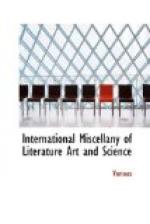“I was once early at her howse (yt being sommer tyme), when she was layed without dores, under the shadowe of a broad-leaved tree, upon a pallet of osiers, spred over with four or five fyne gray matts, herself covered with a fare white drest deare skynne or two; and when she rose, she had a mayd who fetcht her a frontall of white currall, and pendants of great but imperfect couloured and worse drilled pearles, which she put into her eares, and a chayne, with long lyncks of copper, which they call Tapoantaminais, and which came twice or thrice about her neck, and they accompt a jolly ornament; and sure thus attired, with some variety of feathers and flowers stuck in their haires, they seeme as debonaire quaynt, and well pleased as (I wis) a daughter of the howse of Austria behune [decked] with all her jewells; likewise her mayd fetcht her a mantell, which, they call puttawus, which is like a side cloak, made of blew feathers, so arteficyally and thick sewed togither, that it seemed like a deepe purple satten, and is very smooth and sleeke; and after she brought her water for her hands, and then a braunch or twoo of fresh greene asshen leaves, as for a towell to dry them. I offend in this digression the willinger, since these were ceremonyes which I did little looke for, carrying so much presentetnent of civility.”
The description of the Indian dress does not differ from the modern accounts; the style of the “ear-rings,” however, seems to have interested Strachey greatly,—especially the “wild beast’s claws” stuck in, and, above all, “a small greene and yellow-colored live snake, neere half a yard in length, crawling and lapping himself about his neck.” Truly, we can scarcely be surprised that the early settlers looked with suspicion on men who wore such unchristian-like ornaments, and that they more than suspected them to be in league with “the old serpent.” A full description is given of their modes of hunting and fishing; and also of their amusements,—especially their dances, which resemble those of “frantique and disquieted bachanalls.” The writer was not able to obtain much information as to their religion. From some scattered hints, it seems to have resembled the Mexican, both in the human sacrifices and in the secrecy attending them. They also used a sort of embalming for their kings, whose bodies were kept in one of their temples.




